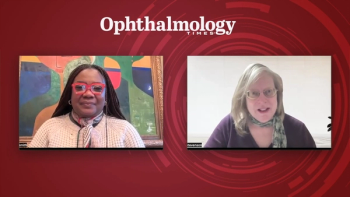
PulseSight doses first patient in PST-611-CT1
Key Takeaways
- PST-611-CT1 trial investigates PST-611's safety and tolerability for AMD and GA, enrolling 6-12 patients in Paris and Grenoble.
- PST-611 is a non-viral vectorized therapy expressing transferrin, aiming to restore iron homeostasis and address AMD's unmet needs.
Preliminary results of PST-611-CT1 are anticipated early 2026, subject to patient recruitment.
PulseSight Technologies recently announced the successful dosing of the first patient in the phase I clinical trial PST-611-CT1, investigating the safety and tolerability of PST-611 for the treatment of
A single ascending dose study, PST-611-CT1 aims to establish the safety profile of PST-611 and validate the maximal tolerated dose in 6-12 patients enrolled with dry AMD and GA. The study is being conducted in Paris and Grenoble by Professor Francine Behar-Cohen, MD, PhD, at the Department of Ophthalmology, Cochin – Assistance Publique-Hôpitaux de Paris (AP-HP), and Professor Christophe Chiquet, MD, PhD, at the Department of Ophthalmology, CHU Grenoble Alpes.
“Having pioneered the development of the electro-transfection technology that delivers DNA plasmids encoding therapeutic proteins into the ciliary muscle of the eye, I am very excited to move PST-611, expressing transferrin, into its first clinical trial,” Behar-Cohen said in a press release.
“Late-stage dry AMD/GA is a progressing disease that leads to vision loss and for which we have no therapeutic options for our patients. Based on its mechanism of action and thanks to the innovative delivery technology, PST-611 has potential to become a major treatment option for these patients.”
PST-611 is a non-viral vectorized therapy for the treatment of AMD and GA, “expressing human transferrin, a highly potent iron regulator, playing a central role in restoring normal iron homeostasis,” a press release said.
Affecting more than 200 million people worldwide, AMD is the leading cause of central vision loss in the elderly population. Due to its complex pathogenesis, AMD represents a high unmet need.
“The dosing of the first patient in our PST-611-CT1 trial is a very exciting milestone for the company. Supported by the previous clinical demonstration of the safety profile of our innovative delivery technology and a solid pre-clinical package, we believe PST-611 holds the potential to improve both anatomical and function feature of dry AMD/GA,” said Judith Greceit, CEO of PulseSight Therapeutics.
“Moreover, the sustained and long-lasting expression of transferrin should help reduce the need for frequent reinjections, strongly improving patients’ compliance to the treatment. Once the safety and the maximal dose are confirmed, our goal is to swiftly move into a phase IIa proof-of-concept study, to demonstrate the ability of transferrin to protect retinal cells from atrophy and preserve vision.”
Preliminary results of PST-611-CT1 are anticipated early 2026, subject to patient recruitment.
Reference
1. First patient dosed in the Phase I clinical trial of PulseSight Therapeutics’ PST-611 treatment for dry AMD/Geographic Atrophy – Pulsesight. Pulsesight.com. Published 2025. Accessed July 7, 2025. https://pulsesight.com/2025/07/07/first-patient-dosed-in-the-phase-i-clinical-trial-of-pulsesight-therapeutics-pst-611-treatment-for-dry-amd-geographic-atrophy/
Newsletter
Don’t miss out—get Ophthalmology Times updates on the latest clinical advancements and expert interviews, straight to your inbox.













































